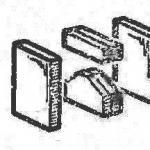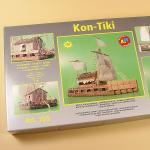Tablets - solid dosage form, obtained by technological processing and pressing medicinal and excipients intended for internal, external, sublingual, implant or parenteral use.
The name "tablet" comes from the Latin word "tabella" - plank, tile. Therefore, various dosage forms, similar in shape to a plank or tile, are still called tablets or trituration tablets, regardless of their technological features.
The production of tablets in the world annually increases by 10-15%. According to the WHO, such rates will continue until the end of the 20th century.
Tablets as a dosage form are widely used in the CIS countries. The volume of production of ordinary tablets is about 90%, coated tablets - 9.4%, with a dry coating - 0.5%, with a film - about 0.1%. Their popularity is due to a number of positive qualities compared to other dosage forms.
Tablets have the following advantages:
0 medical and pharmaceutical: ease of use; dosing accuracy; suction control medicinal substances from tablets at the place of localization (stomach, intestines) and in time; the ability to combine incompatible physical and chemical properties and therapeutic effect medicinal substances; possibility of masking bad smell, taste, color and coloring ability;
0 production: high performance and cost-effectiveness compared to other dosage forms; the possibility of full mechanization and automation of production; hygiene and mass production;
0 operational: high compactness; portability; resistance to adverse mechanical and climatic factors; ease of transportation, storage and vacation, long term validity.
However, tablets also have some disadvantages:
0 the effect of drugs can develop relatively slowly;
0 tablets cannot be administered with vomiting, fainting;
0 during long-term storage, some tablets may become cemented, which leads to a change in the disintegration time;
Ш in the composition of tablets are often introduced ballast substances that do not have therapeutic value, which sometimes cause some side effects(for example, talc irritates the mucous membrane);
Ш individual medicinal substances, in particular sodium or potassium bromides, form highly concentrated solutions in the dissolution zone, which can cause severe irritation mucous membranes Eliminate this deficiency by dissolving the tablets in a certain amount of water;
0 not all patients, especially children, can freely swallow pills.
According to the method of production, tablets are divided into two classes: pressed, obtained by pressing medicinal powders, and trituration, or molding tablets, obtained by molding the tablet mass. The latter make up approximately 1-2% of the total volume of produced tablet dosage forms.
Tablets are also classified according to their design; by composition: simple (single-component) and complex (multi-component) and by structure: frame, single-layer and multi-layer, coated (coated, film and pressed dry) or without it.
Tablets obtained by pressing have different geometric shapes, weights and sizes. The domestic industry mainly produces tablets round shape with a flat or biconvex surface. Abroad produced tablets are cylindrical, biconcave, three-, four-, five- and hexagonal, oval, annular. The most common forms are a low cylinder with a biconvex end surface and rounded edges or an oval disk, which provide maximum strength to the tablet when it is minimum size and mass. It creates convenience in their automatic or semi-automatic packaging; Moreover, given form makes the tablet easier to swallow. When choosing a form, the purpose of the tablet is also taken into account. So, if it is intended for further panning, then it should be a convex shape with thin edges in order to easily cover the edges. For tablets that require rapid dissolution, the ring shape is better suited, ensuring its disintegration from the inside and outside. In particular, this form of tablets is preferable for contraceptive and therapeutic purposes.
The size of the tablets in diameter ranges from 4 to 25 mm. Tablets with a diameter of more than 25 mm are called briquettes. The most common are tablets with a diameter of 4 to 12 mm. Tablets larger than 13 mm in diameter must be chewed, sucked or dissolved before use; with a diameter of 9 mm or more should have a risk (one or two), allowing them to be divided into two or four parts and thus vary the dosage of the medicinal substance.
Some tablets on their surface have inscriptions with the name of the drug or the manufacturer. They are usually made in the form of concave prints, since the raised marks on the end of the tablet are more susceptible to abrasion and destruction.
The diameter of the tablets is determined depending on their weight. For this purpose, a special “mass-diameter” scale is used (OST 64-072-89 “Medications. Tablets. Types and sizes”) (Table 22.1).
This OST mainly provides for the production of two types of tablets: flat-cylindrical without a chamfer and with a chamfer, biconvex uncoated and coated (film, pressed and coated).
Flat-cylindrical tablets are produced in 14 sizes with a diameter in the range of 4-20 mm; uncoated biconcave tablets are available in 10 sizes from 4 to 13 mm, coated tablets from 5 to 10 mm. The height of flat-cylindrical tablets should be within 30-40% of the diameter.
The mass of tablets is mainly 0.05-0.8 g, which is determined by the dosage of the medicinal substance and the number of incoming
| Table 22.1 The dependence of the mass of the tablet on the diameter
|
excipients in their composition. Content active substances in medicines is in various limits (Table 22.2). More than half (55%) of tablet preparations contain active substances is 50% or more by weight of the tablets.
Depending on the purpose and method of application, these types of tablets are distinguished:
Oriblettae are tablets taken orally. Medicinal substances from them are absorbed through the mucous membrane of the stomach or intestines. These tablets are taken orally, washed down with water, or previously dissolved. oral group tablets is the main one. At the same time, enteric-soluble or enetrosol (abundant tablets dissolve selectively at a certain pH of the medium in different departments intestines.
Resoriblettae are sublingual tablets. Substances are absorbed through the mucous membrane of the oral cavity. Thus, tablets with nitroglycerin, antispasmodics, hormones and other substances are used.
Implantablettae - tablets used for implantation. They are designed for delayed absorption of medicinal substances in order to obtain a prolonged therapeutic effect. Usually implant tablets with water-insoluble medicines(deoxycorticosterone acetate, estradiol dipropionate, teturam, etc.) are intended for subcutaneous injection with a special implant. They are usually prepared by pressing sterile medicinal substances without fillers under aseptic conditions up to 50 mg in a cylindrical shape and then additionally sterilized. The slow rate of resorption provides a therapeutic effect from several weeks to a year.
Injectablettae - aseptically prepared tablets are used to obtain injection solutions medicinal substances.
Solublettae - tablets used for the preparation of solutions for various pharmaceutical purposes ( disinfectant solutions, rinsing solutions, douching solutions).
Dulciblettae - sweet tasting tablets are used as chewable tablets.
Bacilli, boli, uretratoria, vagitoria - compressed urethral, vaginal and rectal dosage forms. For example, vaginal tablets may be intended for prophylactic (contraceptive containing contraceptives) and medical measures(contain antiseptics and other medicinal substances). They have different shape(annular, oval, cylindrical), as a rule, without sharp corners. More problematic are ring tablets without a core, which have a large surface of interaction with the secrets of the vaginal mucosa. The specifics of the application and the need for immediate dissolution of such tablets impose special requirements on their quality, which are determined by the selective properties of excipients. Such tablets (ginalgin, candibene, klion-D, clotrimazole, pimafucin) are usually administered using a special syringe.
Tablet (from Latin tabella - board, tile) - a dosage form obtained by pressing drugs or a mixture of drugs and excipients, intended for internal, sublingual, implantation or parenteral use.
The first information about tablets dates back to the middle of the 19th century. In Russia, the first large tablet workshop opened in 1895 in St. Petersburg.
Tablets are one of the most common and promising dosage forms and, as mentioned earlier, currently account for about 80% of the total volume of finished dosage forms. This is due to the fact that tablets have a number of advantages over other dosage forms, namely:
- dosing accuracy of medicinal substances introduced into tablets;
- portability of tablets, providing ease of dispensing, storage and transportation of the dosage form;
- preservation of medicinal substances in a compressed state. For insufficiently stable substances, protective shells can be applied;
- masking unpleasant organoleptic properties medicinal substances (taste, smell, coloring ability), which is achieved by applying shells of sugar, cocoa, chocolate, etc.;
- localization of the action of a medicinal substance in a certain place in the gastrointestinal tract by applying shells that are soluble in an acidic or alkaline environment;
- prolongation of the action of medicinal substances (by coating);
- regulation of the sequential absorption of individual medicinal substances from a tablet complex composition at certain intervals (multilayer tablets);
- a combination of medicinal substances that are incompatible in terms of physicochemical properties.
Along with the positive qualities of tablets as a dosage form, they have a number of some disadvantages, namely:
- during storage, tablets may lose their disintegration and become cemented or, conversely, collapse;
- with tablets, excipients are introduced into the body, sometimes causing side effects (for example, talc irritates mucous membranes);
- separate medications form highly concentrated solutions in the dissolution zone, which can cause severe irritation of the mucous membranes. This disadvantage is easily eliminated if such tablets are crushed and dissolved in a certain amount of water before taking;
- tablets cannot be entered into the body with vomiting or fainting;
- not all patients, especially children, can freely swallow tablets. Tablets have the form of flat and biconvex round, oval discs or other forms of plates.
The most common is the flat-cylindrical form with a chamfer and the biconvex form, which is easy to swallow. In addition, from a technological point of view, such forms of tablets are the most convenient for manufacturing and packaging, since they are easily and tightly packed, moreover, punches and dies for their manufacture are structurally simpler and more cost-effective. Sometimes the tablets may be cylindrical. The diameter of the tablets ranges from 3 to 25 mm, the most common tablets are from 4 to 12 mm. Tablets with a diameter of more than 25 mm are called briquettes. The height of the tablets should be within 30-40% of their diameter. Some tablets have inscriptions with the name of the drug in the form of concave prints on the surface, since the raised letters on the end of the tablets are more prone to abrasion and destruction. Tablets with a diameter of more than 9 mm have a risk (notch), which is applied to it when pressed with a punch. According to the notches, the tablets are easily broken and can be divided with sufficient accuracy into 2 or 4 doses to vary the dosage of the medicinal substance.
There are the following classes of tablets:
- Compressed tablets obtained by pressing medicinal powders on tablet machines. This method is the main one in the production of tablets.
- Trituration tablets (molded, microtablets) obtained by tableting mass. This class of tablets is made in cases where the use of pressure is undesirable for some reason (for example, nitroglycerin tablets, when an explosion can occur when using pressure), or the dosage of medicinal substances is small, and the addition a large number excipients is inappropriate. The mass of such tablets can be up to 0.05 g.
- Uncoated, coated - tablets without a shell or coated with one or more layers of excipients.
- Effervescent - tablets taken after dissolution.
- Enteric tablets (gastric resistant) - tablets that retain the drug substance in gastric juice and releasing it in the intestinal juice.
- With modified release - coated or uncoated "tablets containing special excipients or obtained by special technology, which allows you to program the rate or place of release of drugs.
- Retard tablets - tablets with prolonged (periodic) release of the drug substance from the stock. Usually they are microgranules with a medicinal substance, surrounded by a biopolymer matrix (base), in which the base or microgranules dissolve in layers, releasing the next portion of the medicinal substance.
- Tablets for solution, suspension, etc.
Department of Pharmacognosy and Pharmaceutical Technology
Course work
Extended release tablet technology. Technological equipment, excipients
The work was done by a student
5th year of the 1st group of the Faculty of Pharmacy
Malkina Ekaterina Olegovna
scientific adviser
assistant Chikina Irina Vladimirovna
Yaroslavl 2014
Introduction…………………………………………………………………………….3
I Chapter. Characteristics of tablets as dosage forms ……………… 4
1. Tablets, their characteristics and classification ……………………………4
2. Requirements for the manufacture of tablets ………………………………………..7
2.1. positive and negative sides pills like
dosage form …………………………………………………………..7
2.2. Requirements for the manufacture of tablets ………………... 9
Chapter II. Tablet manufacturing technology
prolonged action ………………………………………………..13
1. Characteristics of prolonged-release tablets ……………….13
2. Classification of dosage forms of prolonged action ....15
3. Nomenclature of prolonged-release tablets …………………19
4. Technology for the manufacture of tablets of prolonged action ...... 26
4.1. The main scheme for the manufacture of tablets ……………………………….26
4.2. Features of the manufacture of prolonged-release tablets ... 27
Conclusion ………………………………………………………………………35
References ……………………………………………………………36
Introduction
Tablets occupy about 50% of the assortment of medicines in the assortment of pharmacies, and this is due to the ease of use and compact packaging. But tablets, like other dosage forms, are not without drawbacks, and therefore one of the most important tasks modern pharmaceutical technology is the creation of dosage forms that increase the bioavailability of drugs and reduce side effects. This can be achieved in various ways, among which the use of special excipients and technological methods can be distinguished, with the help of which it is possible to regulate the release of drugs from the dosage form. Extended release tablets can reduce the dose of the drug entering the bloodstream compared to "simple" tablets, which greatly contributes to the reduction of side effects and the frequency of taking the drug. (scientific statements)
The creation of prolonged dosage forms leads to the achievement of a therapeutic effect with a decrease in the frequency of doses, avoids fluctuations in the concentration of the active substance in the blood and reduces toxicity. In addition, reducing the frequency of drug use improves patient compliance with treatment. /1,2,4,5/
Chapter I Characteristics of tablets as a dosage form
1. Tablets, their characteristics and classification
Tablets - a solid dosage form obtained by pressing, less often by molding powders and granules containing one or more medicinal substances with or without auxiliary components.
The first information about the possibility of pressing powders dates back to the middle of the 19th century. In our country, for the first time, the production of tablets began in 1895 at the plant of medical preparations in St. Petersburg, now the Leningrad Production Association "October". The first study on pills was the thesis of Prof. L.F. Ilyin (1900).
Tablets have the form of flat, and biconvex round, oval discs or other forms of plates. The most convenient for the manufacture, packaging and use of tablets in the form of discs, as they are easily and tightly packed. Stamps and matrices for their manufacture are simpler and cheaper. The diameter of the tablets ranges from 3 to 25 mm. Tablets with a large diameter are considered briquettes. The height of the tablets should be within 30-40% of their diameter.
Sometimes the tablets may be cylindrical. Tablets with a diameter (length) of more than 9 mm have one or two risks (notches) perpendicular to each other, allowing you to divide the tablet into two or four parts and thus change the dosage of the medicinal substance. The surface of the tablet should be smooth, uniform; identification inscriptions can be applied to the end surfaces and conventions(marking). One tablet is usually intended for one dose.
Tablets can be intended for enteral and parenteral administration, as well as for the preparation of solutions or suspensions for oral administration, applications and injections.
Tablets are classified according to a variety of criteria.
How to receive:
pressed (actual tablets);
trituration.
By way of introduction:
oral;
oral;
vaginal;
rectal.
By the presence of the shell:
coated;
uncoated.
Depending on biopharmaceutical and pharmacokinetic properties:
with modified release.
On the basis of readiness for use:
ready-made forms;
semi-finished products for the preparation of a solution or suspension.
Depending on the purpose of drugs, the following groups of tablets are distinguished:
Oriblettae are tablets taken orally. Substances are absorbed by the mucous membrane of the stomach or intestines. Tablets are taken orally with water. Sometimes they are pre-dissolved in water. Oral tablets are the main group of tablets.
Resoriblettae are sublingual tablets. Substances are absorbed by the oral mucosa.
Implantablettae - tablets used for implantation. Designed for delayed absorption of medicinal substances in order to prolong the therapeutic effect.
Injectablettae - tablets prepared under aseptic conditions, used to obtain injectable solutions of medicinal substances.
Solublettae - tablets used for the preparation of solutions from compressed substances for various pharmaceutical purposes (rinses, douches, etc.).
Topic of speech communication:
Well: 3
Discipline: professional Russian language
Compiled by: Ph.D., Assoc. Ozekbaeva N.A.
Topic of speech communication: Production and quality criteria for solid dosage forms. Abstract-summary of literature on the specialty. The structure and composition of the abstract-summary.
II. Target: to improve the skills of introductory and studying reading of texts in the specialty and the skills of written professional speech.
III. Tasks:
Practical skills: improve the skills of summarizing special literature and transmitting information in the form of an abstract-summary.
IV. The main questions of the topic:
1. Abstract-summary of medical literature.
2. Structure and composition of the abstract-summary.
3. Medical terminology on the topic "Production and quality criteria for solid dosage forms".
V. Teaching methods:
· Reproductive: familiarization with theoretical information, performance of training exercises.
· Visual: application of reference schemes.
· Interactive: work in microgroups; linguistic game; question attack.
VI. Topic assignments.
Exercise 1. Read. Explain the meaning of these statements. Write them down.
1) The profession of a doctor is a feat. It requires self-sacrifice, purity of soul and thoughts. Not everyone is capable of this. (A.P. Chekhov) 2) To be true and helpful doctor and achieve accurate knowledge of medicine, six following conditions: innate talent, good education, high and pure morality, studying medicine from a very young age in a famous and good medical school, love for his science and its difficult pursuits - and a significant amount of time. (Hippocrates)
Task 2. Check out the glossary. Read the terms aloud with the correct stress.
Glossary
Solid dosage forms a type of dosage forms characterized by the constancy of volume and geometric shape due to the properties of hardness and elasticity. Solid dosage forms include: briquettes, granules, medical sponges, dragees, caramels, capsules, pencils, microcapsules, microspheres, liposomes, pellets, medicinal films, powders, chewing gums, fees, tablets.
Dragee- a solid dosage form obtained by layer-by-layer application of medicinal substances on microparticles of excipients using sugar syrups.
Briquette- a solid dosage form obtained by pressing medicinal substances or crushed medicinal plant materials (or a mixture various kinds vegetable raw materials) without the addition of excipients and intended for the preparation of solutions, infusions (briquette for infusion) and decoctions (briquette for decoction).
Caramel- solid dosage form high content invert sugar intended for use in oral cavity. Homeopathic caramel contains a homeopathic medicine.
implant- a sterile solid depot dosage form for injection into body tissues. Implants include: implantable tablets, depot tablets, subcutaneous capsules, implantable rods.
Microcapsules- capsules consisting of a thin shell of polymeric or other material, spherical or irregular shape, ranging in size from 1 to 2000 microns, containing solid or liquid medicinal substances with or without the addition of excipients. Microcapsules are part of other, final dosage forms - capsules, powder, ointment, suspension, tablets, emulsion.
Tablets- a solid dosage form obtained by pressing powders and granules containing one or more medicinal substances with or without the addition of excipients.
Divisible tablets- tablets with a diameter of more than 9 mm, having one or two risks (notches) perpendicular to each other, which allows you to divide the tablet into two or four parts and thus vary the dosage of the drug.
crushable tablets- tablets for the preparation of a solution or suspension, requiring preliminary grinding.
Covered and uncovered- containing special excipients or obtained using a special technology, which allows you to program the speed or place of release of the drug.
Coated tablets- tablets coated with one or more layers of excipients of natural or synthetic origin, sometimes with the addition of substances that form a coating of medicinal or surfactants. Depending on the composition and method of application, coatings are distinguished: coated, film, pressed; depending on the medium in which the coating should dissolve: gastro-soluble (gastric soluble) and enteric-soluble (enteric-soluble).
Enteric tablets(gastro-resistant tablets) - tablets that are stable in gastric juice and release the drug or substances in the intestinal juice. Obtained by coating tablets with an enteric coating (enteric tablets) or by compressing granules and particles previously coated with an enteric coating or by compressing drugs mixed with an enteric-resistant filler (durules).
film-coated tablets- Tablets coated with a thin shell (film), which is less than 10% by weight of the tablet. Film coatings can be soluble in water (from solutions of natural cellulose, polyethylene glycols, gelatin and gum arabic, etc.) and insoluble in water, or varnishes (from some macromolecular compounds)
Modified release tablets- coated or uncoated tablets containing special excipients or obtained by a special technology that allows you to program the rate or place of release of the drug substance. The term is used for controlled release tablets, sustained release tablets, slow release tablets, etc. The term is not used for tablets referred to as depot tablets, implantable tablets, retard tablets, rapid retard tablets.
Task 3. Read the text first in its entirety, then paragraph by paragraph. Using the questions, make abstracts-answers to the questions. Save the numbering. Based on the theses, verbally reveal the main provisions of the text.
Tablets (lat. tabulettae from tabula - board; medicamenta compressa, comprimata)- a solid dosage form obtained by pressing, less often - by molding powders and granules containing one or more medicinal substances (PM) with or without the addition of auxiliary components. By appearance usually they are round or quadrangular (with rounded corners) plates with a flat or biconvex end surface, ranging in size from 3 to 25 mm in diameter, with a thickness within 30-40% of the diameter. Sometimes they can be cylindrical. Tablets with a diameter (length) of more than 9 mm have one or two risks (notches) perpendicular to each other, allowing you to divide the tablet into two or four parts and thus change the dosage of the drug. The surface of the tablet should be smooth, uniform; identification inscriptions and symbols (marking) can be applied to the end surfaces.
Tablets can be intended for enteral and parenteral administration (including by implantation), as well as for the preparation of solutions or suspensions for oral administration, applications and injections. Their advantages are small volume, the possibility of accurate dosing under conditions mass production, the possibility of masking the unpleasant organoleptic properties of the drug, the localization of the action of the drug, the possibility of preventing errors when taking (labeling), ease of storage, transportation, etc. The disadvantages include the possibility of cementing or, on the contrary, mechanical destruction (crumbling) during storage, difficulty in swallowing in children.
Questions:
1. Latin name tablets.
2. What are tablets?
3. What are the tablets in appearance?
4. What should be the surface of the tablet?
5. What are the advantages and disadvantages of tablets?
Task 4. Check out the information. Make a reference diagram "The structure of the abstract-summary".
Abstract-summary - this is Short text, which contains only key points and the position of a particular topic.
2. Subject of the article (book). Specified common topic source. In this case, the following expressions are used: An article (book, monograph, etc.) is devoted to ... (topic, issue, problem).
3. Composition. Specify how many and which structural parts consists of a source (usually a book). In this case, the following expressions are used:
The book (article) consists of (includes, contains) ... (three sections, etc.).
4. Main content. Specific results or conclusions of the author are presented in accordance with the structure of the article. The following expressions are used:
The introduction indicates (notes) that ...; The first chapter highlights .... The author notes (indicates, concludes) that ...; The second chapter is devoted (contains) .... According to the author, .. .; In the third chapter...; In the conclusion it is indicated (noted) that..., etc.
5. Availability of illustrative material. The presence of illustrations, drawings, tables, and other visual materials is noted. Expressions like:
6. Addressee. It is noted for whom the text is intended. The following expressions are used: The article is intended for specialists in the field...;
- “- is of interest to ... (a wide range of readers) etc.
Abstract-summary contains objective specific information, conclusions of the author. Language requirements: brevity, simplicity, clarity of presentation.
Task 5. Reception "Thick and subtle questions". Read the text paragraph by paragraph and formulate the micro-theme of each paragraph. Fill in the table: in the left column, write down 3-5 questions that require a detailed answer, and in the right column, write 3-5 questions that require an unambiguous answer.
Varieties of tablets depending on the method of their preparation
Pressed tablets (lat. tabulettae compressae) - tablets obtained by pressing a drug, a mixture of drugs and excipients. Most tablets are compressed, which is why they are usually referred to simply as "tablets". To obtain them, various auxiliary substances are used: fillers, baking powder, binders and adhesives, sliding and lubricating substances, dyes.
Trituration tablets (syn. molded tablets, microtablets; lat. tabulettae friabiles) - tablets obtained by molding by squeezing a plastic wet mass (wetting with 60% ethanol) followed by drying. Such tablets are a mixture of small doses of crushed drugs with lactose, sucrose or mannitol (trituration) and are small cylinders weighing up to 0.05 g, 1-6 mm in diameter, less hard and durable than regular pills. The share of trituration tablets is 1-2% of all tablet preparations. They are made in those cases when it is necessary to obtain microtablets, the production of which is difficult to carry out on modern tablet machines, or when a change in drug substance may occur during pressing. Trituration method of preparation, as well as complete absence sliding and other insoluble excipients provide the formation of a readily soluble porous body, so trituration tablets are promising for some prescriptions eye drops(see. Eye tablets), injection solutions, implantation under the skin. AT foreign literature trituration tablets for implantation are sometimes called pellets.
Tablets - a solid dosage form, which is a compressed one or more medicinal substances. The most essential moment in the technology of tablets is pressing. From here comes another name proposed at the beginning for this dosage form - Medicamenta compressa.
The first information about the possibility of pressing powders is to middle of the 19th century. In our country, for the first time, it began to produce tablets in 1895. The plant of medical preparations in St. Petersburg, now the Leningrad Production Association "October". The first study on pills was the thesis of Prof. L. F. Ilyina (1900).
Tablets are currently found wide application as a dosage form of many drugs. From total 40% of factory-made ready-made medicines dispensed from pharmacies are tablets. Increasingly, the preparation of tablets instead of various on the composition of combinations of powders, mixtures, solutions, pills.
In addition, tablets have spread as a form of nutrient dispensing (bouillon, soup tablets), confectionery(chocolate), chemical substances(reagents, paints), etc.
Tablets have the form of flat, and biconvex round, oval discs or other forms of plates. The most convenient for the manufacture, packaging and use of tablets in the form of discs, as they are easily and tightly packed. Stamps and matrices for their manufacture are simpler and cheaper. Sometimes the tablets may be cylindrical. The diameter of the tablets ranges from 3 to 25 mm. Tablets with a large diameter are considered briquettes. The height of the tablets should be within 30-40% of their diameter.
One tablet is usually intended for one dose. Tablets with a diameter of more than 9 mm have a risk (notch), which is applied to it when pressed with a stamp. By notches, the tablets are easily broken and can be divided with sufficient accuracy into 2 doses.
Depending on the purpose of drugs, the following groups of tablets are distinguished.
Oriblettae are tablets taken orally. Substances are absorbed by the mucous membrane of the stomach or intestines. Tablets are taken orally with water. Sometimes they are pre-dissolved in water. Oral tablets are the main group of tablets.
Resoriblettae are sublingual tablets. Substances are absorbed by the oral mucosa.
Implantablettae - tablets used for implantation. Designed for delayed absorption of medicinal substances in order to prolong the therapeutic effect.
Injectablettae - tablets prepared under aseptic conditions, used to obtain injectable solutions of medicinal substances.
Solublettae - tablets used for the preparation of solutions from compressed substances for various pharmaceutical purposes (rinses, douches, etc.).
Tablets for external use containing toxic substances, must be stained with a solution of megillen blue, and those containing mercury dichloride - with a solution of eosin.
Tablets, like other dosage forms, have positive and negative sides. To positive qualities tablets and their production include:
1) full mechanization of the manufacturing process, providing high productivity, purity and hygiene of tablets;
2) the accuracy of dosing of medicinal substances introduced into tablets;
3) portability of tablets, providing ease of dispensing, storage and transportation of drugs;
4) preservation (relatively long) of medicinal substances in a compressed state. For insufficiently stable substances, protective shells can be applied;
5) masking of unpleasant organoleptic properties (taste, smell, coloring ability). It is achieved by imposing shells of sugar, cocoa, chocolate, etc.;
6) the possibility of combining medicinal substances that are incompatible in terms of their physicochemical properties in other dosage forms;
7) localization of the action of the medicinal substance; achieved by applying shells of a special composition, soluble mainly in an acidic (stomach) or alkaline (intestine) environment;
8) prolongation of the action of medicinal substances;
9) regulation of the sequential absorption of several medicinal substances from a tablet at certain intervals of time - the creation of multilayer tablets;
10) prevention of errors in dispensing and taking medications, achieved by pressing out inscriptions on the tablet.
Along with this, tablets are not free from some (however, completely removable) shortcomings:
1) during storage, tablets may lose their disintegration and become cemented or, conversely, break down;
2) with tablets, substances are introduced into the body that have no therapeutic value, and sometimes cause some side effects (for example, talc irritates the mucous membrane), but it is possible to limit their amount;
3) individual drugs (for example, sodium or potassium bromide) form highly concentrated solutions in the dissolution zone, which can cause severe irritation of the mucous membranes. Flaw we will eliminate this: such tablets before taking crushed and dissolved in a certain amount of water;





